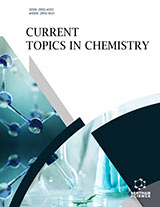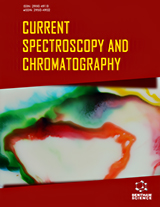Abstract
The persistence of pesticides and drugs in products destined for human consumption is of great concern, in particular because of their potential carcinogenic character. However, often the transformation products formed through degradation processes possess higher toxicity than the parent compounds. It is then of primary importance not only to achieve their abatement (through purification procedures), but also to detect and identify the formed by-products, in order to evaluate their formation kinetics, stability and toxicity. For this purpose, in the present review we will study in depth, the transformation pathways followed by molecules belonging to different classes of compounds, i.e pesticides, drugs and dyes and their derivatives in photo-assisted, environmental and biological studies, where they have been identified and characterized by means of hyphenated techniques. Particular attention will be paid to degradation simulating models, such as the photocatalytic process on titanium dioxide.
Keywords: pesticides, drugs, dyes, hplc/ms, gc/ms, photocatalysis
Current Analytical Chemistry
Title: Identification of Degradation Products by Adopting GC or HPLC/MS Techniques
Volume: 1 Issue: 3
Author(s): Paola Calza, Claudio Medana, Claudio Baiocchi and Ezio Pelizzetti
Affiliation:
Keywords: pesticides, drugs, dyes, hplc/ms, gc/ms, photocatalysis
Abstract: The persistence of pesticides and drugs in products destined for human consumption is of great concern, in particular because of their potential carcinogenic character. However, often the transformation products formed through degradation processes possess higher toxicity than the parent compounds. It is then of primary importance not only to achieve their abatement (through purification procedures), but also to detect and identify the formed by-products, in order to evaluate their formation kinetics, stability and toxicity. For this purpose, in the present review we will study in depth, the transformation pathways followed by molecules belonging to different classes of compounds, i.e pesticides, drugs and dyes and their derivatives in photo-assisted, environmental and biological studies, where they have been identified and characterized by means of hyphenated techniques. Particular attention will be paid to degradation simulating models, such as the photocatalytic process on titanium dioxide.
Export Options
About this article
Cite this article as:
Calza Paola, Medana Claudio, Baiocchi Claudio and Pelizzetti Ezio, Identification of Degradation Products by Adopting GC or HPLC/MS Techniques, Current Analytical Chemistry 2005; 1 (3) . https://dx.doi.org/10.2174/157341105774573992
| DOI https://dx.doi.org/10.2174/157341105774573992 |
Print ISSN 1573-4110 |
| Publisher Name Bentham Science Publisher |
Online ISSN 1875-6727 |
 5
5
- Author Guidelines
- Bentham Author Support Services (BASS)
- Graphical Abstracts
- Fabricating and Stating False Information
- Research Misconduct
- Post Publication Discussions and Corrections
- Publishing Ethics and Rectitude
- Increase Visibility of Your Article
- Archiving Policies
- Peer Review Workflow
- Order Your Article Before Print
- Promote Your Article
- Manuscript Transfer Facility
- Editorial Policies
- Allegations from Whistleblowers
- Announcements
Related Articles
-
Drug Treatment of Eosinophilic Oesophagitis
Current Drug Metabolism The Use of Nitric Oxide Synthase Inhibitors in Inflammatory Diseases: A Novel Class of Anti-Inflammatory Agents
Current Medicinal Chemistry - Anti-Inflammatory & Anti-Allergy Agents Microwave-Assisted Chemistry of 2(1H)-pyrazinones
Current Organic Chemistry Allergoids for Allergy Treatment
Recent Patents on Inflammation & Allergy Drug Discovery Use of Glucocorticoids in Pregnancy
Current Pharmaceutical Design Anti-Inflammatory Approaches that Target the Chemokine Network
Recent Patents on Inflammation & Allergy Drug Discovery Identification of Genes for a Complex Trait: Examples from Hypertension
Current Pharmaceutical Biotechnology Concomitant use of Tyrosine-Kinase Inhibitor and Mepolizumab in Asthma Secondary to Chronic Myeloid Leukemia with Hypereosinophilia
Anti-Inflammatory & Anti-Allergy Agents in Medicinal Chemistry Synthesis and Biological Potential Assessment of 2-Substituted Quinazolin-4(3<i>H</i>)-ones as Inhibitors of Phosphodiesterase-I and Carbonic Anhydrase-II
Medicinal Chemistry Therapeutic Potential of Antileukotriene Drug-<i>Camellia sinensis</i> Extract Co-Formulation on Histamine Induced Asthma in Guinea Pigs
Current Drug Research Reviews Nanowired Drug Delivery of Antioxidant Compound H-290/51 Enhances Neuroprotection in Hyperthermia-Induced Neurotoxicity
CNS & Neurological Disorders - Drug Targets New Patents of Fixed Combinations of Nasal Antihistamines and Corticosteroids in Allergic Rhinitis
Recent Patents on Inflammation & Allergy Drug Discovery Editorial [Hot Topic:Toward Translational Research on VIP AND PACAP (Executive Editor: A. Arimura)]
Current Pharmaceutical Design The Study of HLA Class II and Autoimmune Diabetes
Current Molecular Medicine Gene Therapy for Allergic Diseases
Current Gene Therapy Recent Advances in Coumarins and 1-Azacoumarins as Versatile Biodynamic Agents
Current Medicinal Chemistry Potential Targets and Their Relevant Inhibitors in Anti-influenza Fields
Current Medicinal Chemistry Synthesis and Antibacterial Activity of Novel Chalcone Derivatives of Apocynin
Letters in Drug Design & Discovery Withdrawal Notice: Pharmacological analysis of Cannabis sativa L.: A potent herbal plant
Mini-Reviews in Medicinal Chemistry Anti-inflammatory Natural Prenylated Phenolic Compounds - Potential Lead Substances
Current Medicinal Chemistry


























